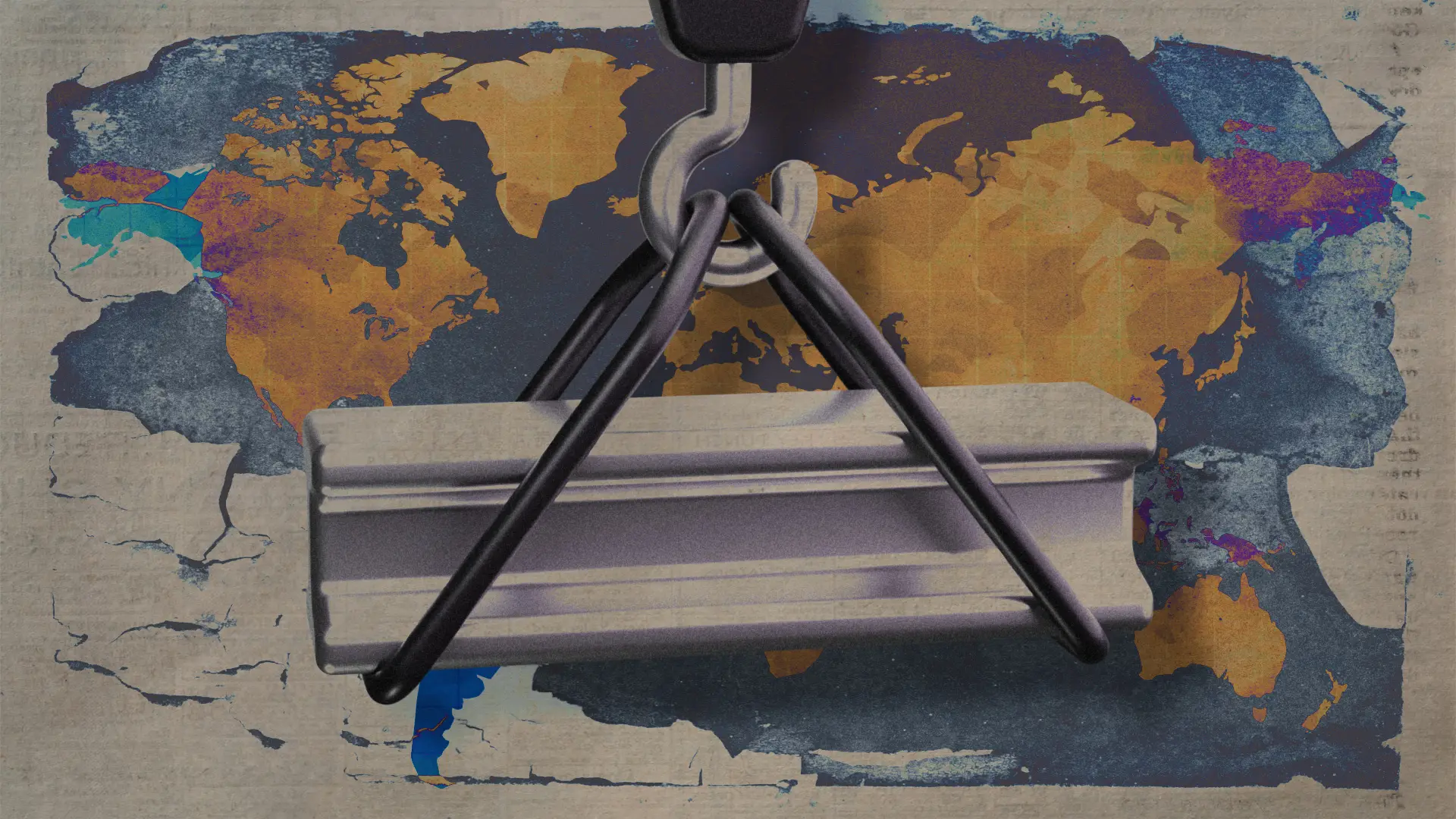Key Points
- China dominates the global solar energy (PV) supply chain with an over 80% share.
- The Chinese solar industry is currently losing millions of dollars a year.
- It is kept in business by massive financial support from the Chinese Communist government.
- Price-cutting by Chinese solar suppliers threatens the existence of all Western solar energy equipment manufacturers.
The Chinese solar industry has rapidly expanded over the past decade. With massive investments, China has taken a dominating lead in the industry. It has captured over 80% of the global share in all the manufacturing stages of solar panels (more than twice China’s share of global solar PV demand). While one of the world’s top ten solar module producers is American and one Korean, the other eight are all Chinese. And China holds all top ten spots when the complete solar PV manufacturing industry supply chain is considered.[1]

The Chinese solar industry has been taking advantage of this dominant position, ramping up production and undercutting on prices, creating a “global supply glut.” According to the IEA, “In 2023, spot prices for solar PV modules declined by almost 50% year-on-year, with manufacturing capacity reaching three times 2021 levels”. The driving force behind this has been almost exclusively China. IEA forecasts China to maintain its 80-95% share of global supply chains into 2024.[3]
Chinese companies’ ability to undercut their competitors on prices allows them to maintain their production share and makes it difficult to challenge their position in the market. However, China’s ability to undercut on prices does not come from a wholly more efficient manufacturing process or comparative advantage in solar production.
Despite their domineering position in the market, the top Chinese solar firms are in bad financial shape and are only maintaining their position with financial support from the Chinese government.
In the Hole
Debt is one of the largest problems facing Chinese solar firms. Many of the leading companies have cumbersome and expanding debts, with no break in sight.
China’s JinkoSolar, one of the world’s largest solar panel producers, is drowning in debt. As of 31 December 2023, JinkoSolar had $4.38 billion USD total interest-bearing debts.[4] Three years before, the company only had about $2.53 billion USD total interest-bearing debts, making it a 50% increase since 2020.[5] JinkoSolar’s net debt financials (i.e. when assets are subtracted from debt) are even worse. From 2020-2022, the company’s net debt increased 63%.[6]
JinkoSolar is not alone among Chinese solar companies with large and increasing debts. Canadian Solar (a joint Chinese-Canadian solar company with production located in China) saw its net debt increase 61% from 2020-2022.[7] Trina Solar’s net debt increased nearly 180% during the same time period.[8]
Even Chinese companies that have managed to avoid rapidly increasing debt recently, such as LONGi and JA Solar, are still burdened with heavy debt loads acquired in previous years. LONGi recently admitted it plans to cut some 5% of its 80,000 global workforce.[9]
Poor Financial Performance
The financial problems of the top Chinese solar firms become even worse when looking at the companies’ cash flow. JinkoSolar, Canadian Solar, Trina Solar, and JA Solar have all had largely negative free cash flow over the past four years. Of the five, only LONGi has had consistently positive free cash flows. The consistently negative free cash flows of all the other companies make the debt problems even greater. These Chinese solar companies do not have any direct way to ease their massive debts and maintain current production and price levels, unless they have support from the Chinese government. In 2022, Jinko reported a negative cash flow of $2.4 billion USD. Such huge cash losses would be unthinkable in a Western company.

Chinese Government Support
The only factor that allows Chinese solar firms to maintain their dominant share of the solar industry with record low prices, while also surviving large debts and negative cash flows, is assistance from the Chinese Communist Party (CCP).
China has had a long history of investing heavily in its solar industry for over a decade,
Throughout the 2010s, the China Development Bank provided extensive funding to renewable energy companies in China, amounting to over 200 billion RMB ($28 billion USD). Nearly all of this investment benefitted Chinese State-Owned Enterprises (SOEs) or companies affiliated with the Chinese government. By 2020, Chinese SOEs accounted for 83% of the large-scale grid-connected PV power plants in China.[10]
Even Chinese solar companies that are not officially SOEs have extensive ties with the CCP. For example, the Chairman & General Manager of China’s JA Solar (Bao Fang Jin) is also on the board of Chinese People’s Political Consultative Conference of Ningjin,[11] a vital part of China’s “united front” policy of aligning all non-political spheres in China with CCP interests. And the non-SOE Chinese solar firms also receive direct subsidies from the Chinese government. JinkoSolar received $165.6 million USD in subsidies in 2023 alone, an 8% increase from the year before.[12]
The Chinese government’s commitment to supporting its solar industry is showing no signs of ending. In 2023 alone, China invested a total of $130 billion USD into its solar industry. These investments allow Chinese solar companies to maintain low prices for export, regardless of their financial sheets. According to a report by Wood Mackenzie, “a solar module made in China is 50% cheaper than that produced in Europe and 65% cheaper than the US.” Furthermore, by maintaining these prices, China will be able to hold over 80% of the world’s polysilicon, wafer, cell, and module manufacturing capacity from 2023 to 2026.[13]
U.S. Treasury Secretary Janet Yellen is also concerned about the negative impact of China’s subsidies for its green energy companies and the global supply glut of Chinese solar panels flooding global markets, stating “I intend to talk to the Chinese when I visit about overcapacity in some of these industries, and make sure that they understand the undesirable impact that this is having – flooding the market with cheap goods – on the United States but also in many of our closest allies.”[14]
Other Violations – Circumvention and Labor Exploitation
Chinese solar companies have also engaged in many other illicit activities to gain unfair advantages against Western competitors and unfairly undercut the market despite their poor financial performance.
To circumvent duties on Chinese solar imports into the United States, Chinese solar companies have used third countries as transshipment points to avoid the rightful duties owed. The U.S. Department of Commerce recently confirmed the circumvention activity of several Chinese solar firms after an extensive inquiry. Chinese solar companies such as Canadian Solar and Trina Solar circumvented U.S. duties by using third countries (namely Cambodia, Thailand, and Vietnam) for minor processing in an attempt to avoid paying antidumping and countervailing duties (ADD/CVD).[15] However, the Biden administration’s Solar Emergency Declaration, in effect until June 2024, protects Chinese solar manufacturers and allows them to illegally circumvent despite the Commerce Department investigation. Congress passed bipartisan legislation to repeal the Biden rule, but President Biden vetoed that legislation. The House voted to override the President’s veto, but ultimately failed to reach the necessary two-thirds majority to override the veto.
There are also grave concerns about Chinese solar companies’ connection to human rights violations related to labor exploitation in the Uyghur Region of China.
The manufacturing distribution of the key building blocks of solar panel production is intensely concentrated. Of today’s solar modules, 95% rely on one primary material, solar-grade polysilicon. The production of this key building block of solar panel production is dominated by China, whose share of the global polysilicon supply has risen rapidly in recent years. In 2004, China held almost zero share of the supply. By 2018 China’s share of the global polysilicon supply reached 55% and today it’s over 75%.[16]
Within China, polysilicon production is further concentrated in the Xinjiang-Uyghur region, which accounts for approximately 45% of the world’s solar-grade polysilicon supply.[17] This region is notorious for labor exploitation by the Chinese government and companies.

Source: Sheffield Hallam University – Helena Kennedy Centre
According to a study by Sheffield Hallam University, “All polysilicon manufacturers in the Uyghur Region have reported their participation in labour transfer programmes and/or are supplied by raw materials companies that have.” Chinese solar firms LONGi Green Energy, JinkoSolar, Trina Solar, JA Solar, and Canadian Solar (among many others) are all deeply linked with polysilicon suppliers in the Uyghur Region, as detailed in the study.[18]
Chinese solar companies benefit from this cheap forced and exploited labor in the Uyghur Region further allowing them to keep prices below free market levels despite poor financials. The concentration of the polysilicon supply in a region so tied to human rights abuses is not only volatile for the market but also deeply unethical. This supply chain relationship is further evidence of China’s unfair trade practices compared to Western firms that allow them to unfairly undermine competition.
Conclusion
Chinese solar companies have established a dominant market and manufacturing share. They have artificially pushed down prices below what the rest of the world can compete with while sinking deeper into debt and posting largely negative cash flows. How are they able to do this? 1) Chinese Communist Party Support through subsidies and investments, 2) Illegal trade practices to circumvent duties owed on their exports, and 3) An overriding share of the solar manufacturing supply chain (particularly in polysilicon), concentrated in low-cost suppliers benefiting from forced labor.











